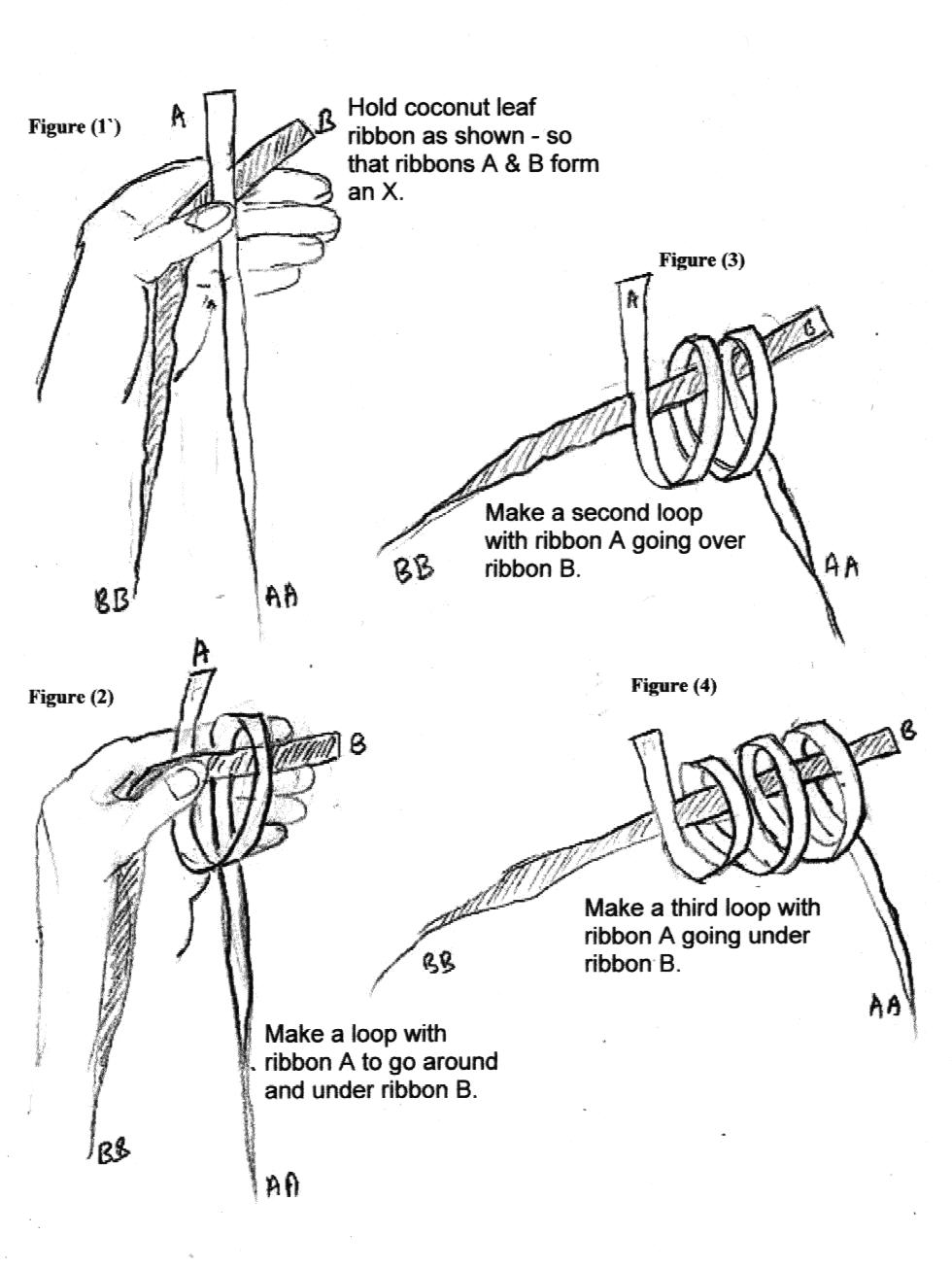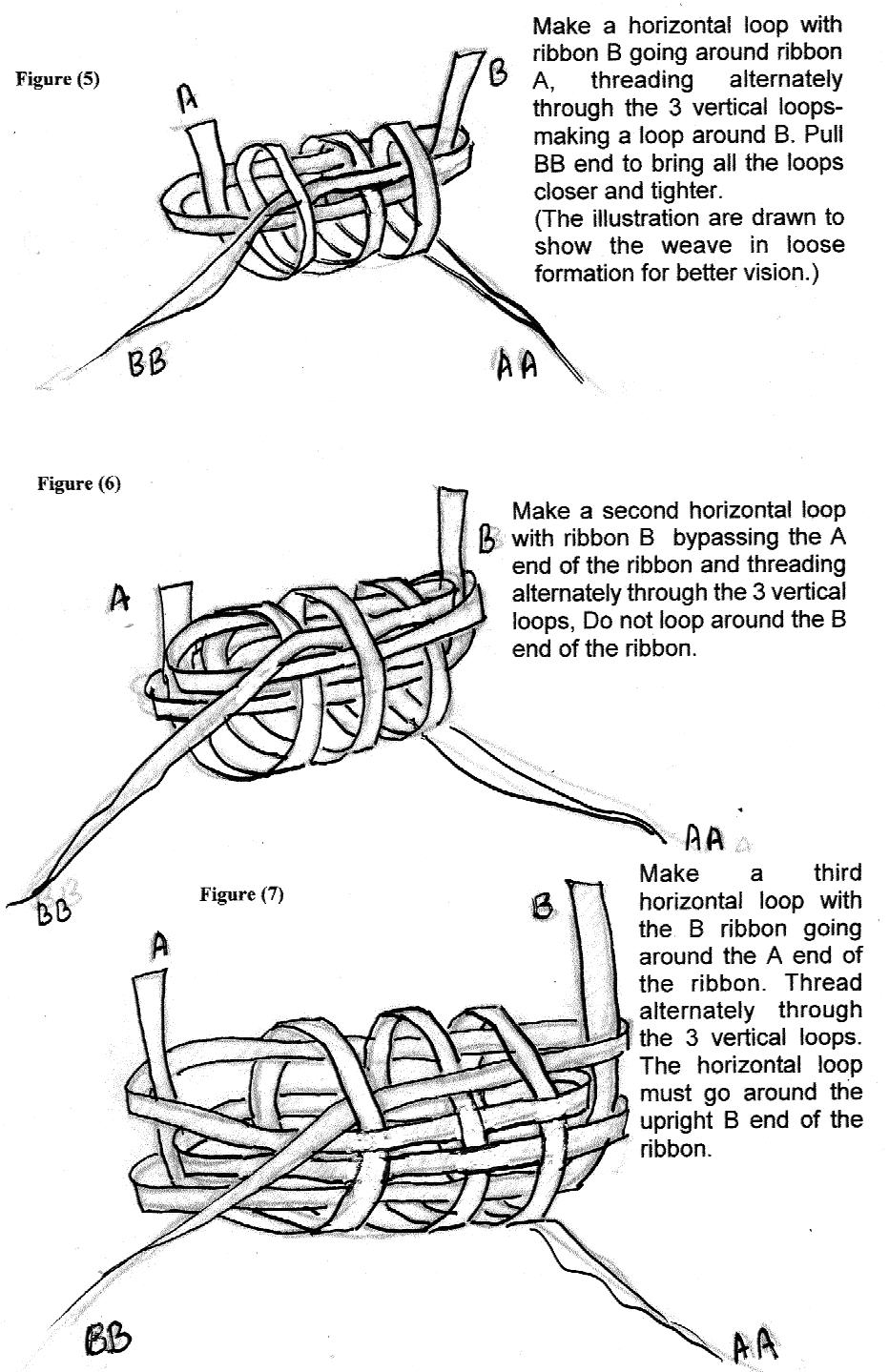The first of the Kampung crafts to be demonstrated here is ketupat weaving. The ketupat is still being woven and sold by the Satay vendors of Singapore, Malaysia and Indonesia, but ketupat weaving in these regions is fast becoming a dying craft among the Malays as alternative and more expedient methods of making the rice cake have become available to the present generation. Ketupat casings are however still woven in homes for the Aidilfitri celebrations. During such times street vendors can be found at the Malay Village at Geylang Serai Singapore offering ketupat casings and cooked ketupat as well throughout the night till the wee hours of morning.
Pandan leaves may also be used. The pandan leaves used are of the long variety and not the type commonly used for food flavouring. However, because of the scent or flavour of the Pandan leaves, such leaves are not usually used when the ketupat is served as a complement to certain dishes as the pandan flavour might affect the taste of the accompanying dishes. Ketupat are therefore traditionally served plain without any flavour. However, some ketupat are boiled in coconut milk seasoned with some salt.
For decorative purposes, ketupat casings may be woven in multicoloured craft ribbons.
How to cook & serve ketupat.The ketupat casings are filled with uncooked rice at the top opening of the casing. It is filled two thirds or three quarters full. The more water absorbent Chinese rice is preferable to the Thai variety as the Chinese rice makes a more compact ketupat and the texture of the ketupat is also smoother. A whole bunch of filled ketupat is then put into a big pot of water and boiled for about 3 hours. The ketupat are then cooled. Serve ketupat cut across diagonally twice with the casing still intact. Remove the casing after cutting. Ketupat are traditionally served with Sayur Lodeh, Serunding, Sambal Tumis, Soto or Satay. Because of the long hours of boiling, the ketupat will keep well and may last a few days even without refrigeration.
Briefly stated the ketupat weave comprises three vertical and three horizontal interlocking loops. The two ends of the split coconut leaves end up together at the diagonal opposite ends of the ketupat casing: the 2 narrow ends finish together diagonally opposite the two broad ends. The opening of the ketupat (into which rice is filled) is located at the top end where the broad ends of the leaves are located.
The leaves are initially handled iand placed in the manner illustrated in figure (1) below. When making the X, the B leaf should be longer than the A leaf so that there is sufficient space to line up the vertical loops.from the centre of cross to the B end of the leaf.
The 3 vertical loops (figures 2,3,4) are to be kept close together as otherwise it may be difficult to handle the weave when you get to stage (8) where the weave has to be turned around so that the bottom is turned up to face you. A loose weave may just fall apart then. Furthermore, you may also run out of the lengths of the leaves if the weave is woven too loose.
Dexterity comes with practice. A skilled person can complete one ketupat casing in under 1 minute.
NB The illustrations below are sketched to show the weave in loose formation as otherwise the weave will not be shown clearly enough and the back portion of the ketupat casing will not be visible. When weaving the ketupat all the vertical and horizontal loops should be woven as close to one another as it is possible to allow you to manouvre the next step. Try to keep the woven casing a square and not a rectangle as shown in the illustrations. You can do this by tightening or shortening the horizontal loops. In the sketches, the elongated horizonatal loops are also exaggerated to aid visbility.
Weaving Instructions

